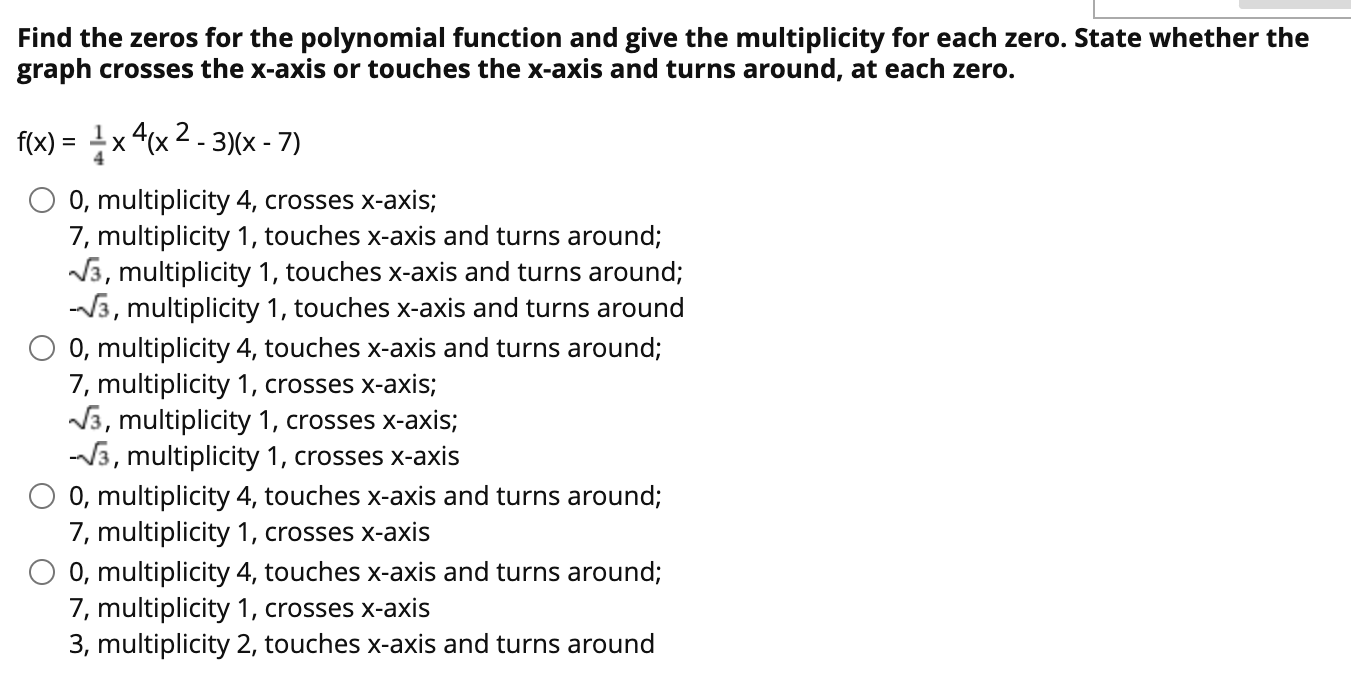Home /
Expert Answers /
Other Math /
find-the-zeros-for-the-polynomial-function-and-give-the-multiplicity-for-each-zero-state-whether-pa140
(Solved): Find the zeros for the polynomial function and give the multiplicity for each zero. State whether ...
Find the zeros for the polynomial function and give the multiplicity for each zero. State whether the graph crosses the x-axis or touches the x-axis and turns around, at each zero. = f(x) = 4(x + 2) (x - 2) 3 2, multiplicity 1, crosses x-axis; -2, multiplicity 3, crosses x-axis - 2, multiplicity 1, crosses x-axis; 2, multiplicity 3, crosses x-axis 2, multiplicity 1, touches the x-axis and turns around; -2, multiplicity 3, touches x-axis and turns around - 2, multiplicity 1, touches the x-axis and turns around; 2, multiplicity 3, touches x-axis and turns around
Find the zeros for the polynomial function and give the multiplicity for each zero. State whether the graph crosses the x-axis or touches the x-axis and turns around, at each zero. 4 f(x) = 4 x 4(x2- -3)(x - 7) 0, multiplicity 4, crosses x-axis; 7, multiplicity 1, touches x-axis and turns around; 13, multiplicity 1, touches x-axis and turns around; 3, multiplicity 1, touches x-axis and turns around O, multiplicity 4, touches x-axis and turns around; 7, multiplicity 1, crosses x-axis; 13, multiplicity 1, crosses x-axis; --/3, multiplicity 1, crosses x-axis O, multiplicity 4, touches x-axis and turns around; 7, multiplicity 1, crosses x-axis 0, multiplicity 4, touches x-axis and turns around; 7, multiplicity 1, crosses x-axis 3, multiplicity 2, touches x-axis and turns around
Give the maximum possible number of turning points of the graph of the given function. - - f(x) = (x - 3)(x + 3)(x - 3)(x + 7) 3 2 0
Determine the maximum possible number of turning points for the graph of the function. f(x) = (x + 7)(x + 1)(5x + 4) 2 3 ??? 5 0



